
Growing your own potatoes is usually guaranteed to give you a plentiful harvest. However, there is one little thing that may get in the way of your harvesting plans – the Colorado potato beetle.
Many home growers and commercial potato farmers find themselves facing an infestation of this pest. The Colorado potato beetle is the most destructive and well-known potato pest. They are famous for their ability to resist pesticides, making them difficult to control and eradicate.
But fear not – there are many natural ways to control this pest and remove them if you spot them on your potatoes.
What Is A Colorado Potato Beetle?
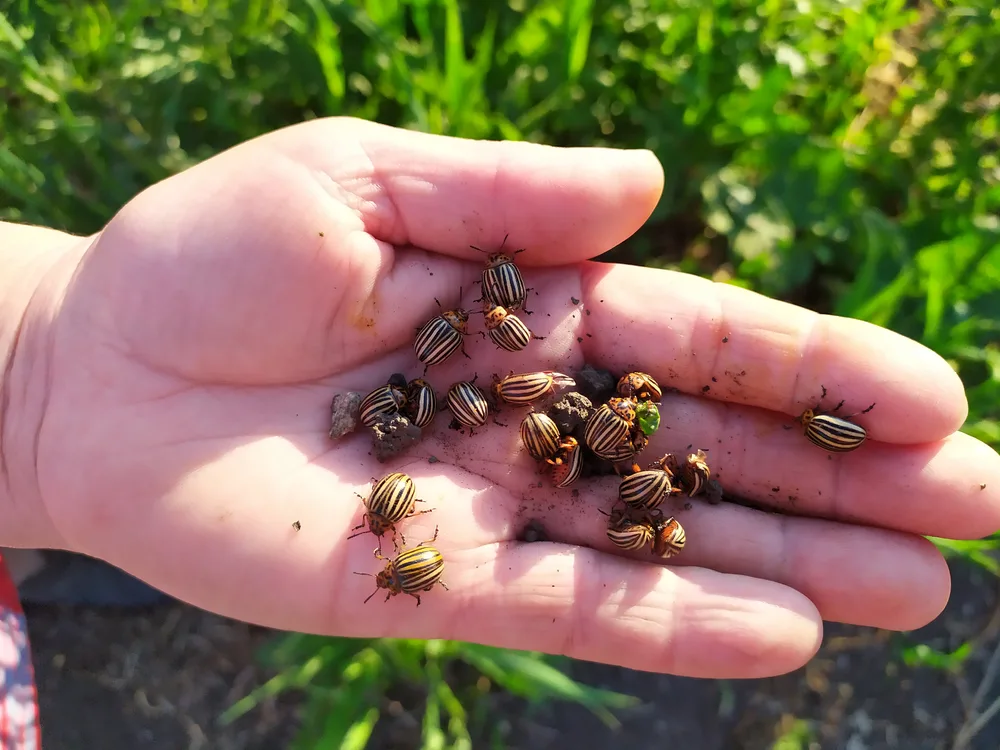
Identification
These beetles are quite easy to spot on your potatoes as they are large and brightly colored. You may also find them attacking other members of the Solanaceae family – including peppers, eggplant and tomatoes.
Adults are oval-shaped, with rusty or yellow-orange coloring behind the head. Their wings can either be yellow or white, with several black stripes. They grow to about ⅜ inch.
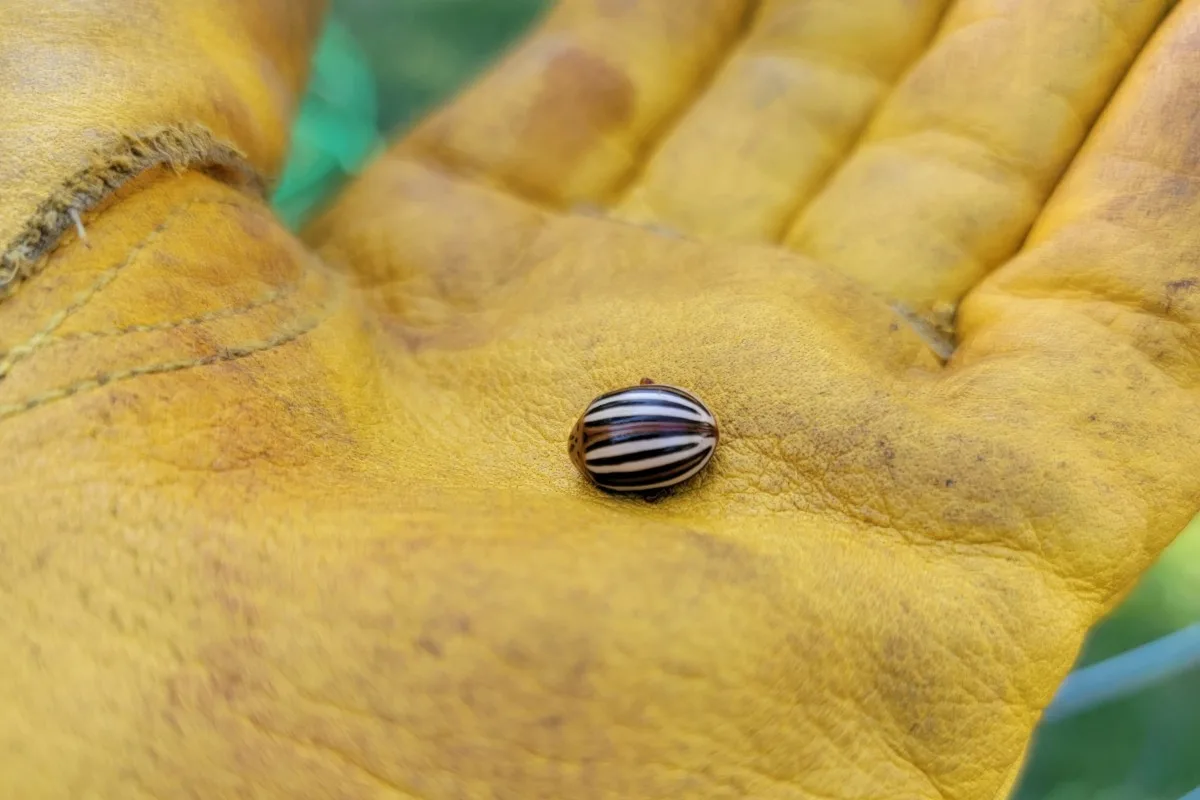
You will find colorado potato beetle eggs and larvae on the underside of the potato plant leaves.
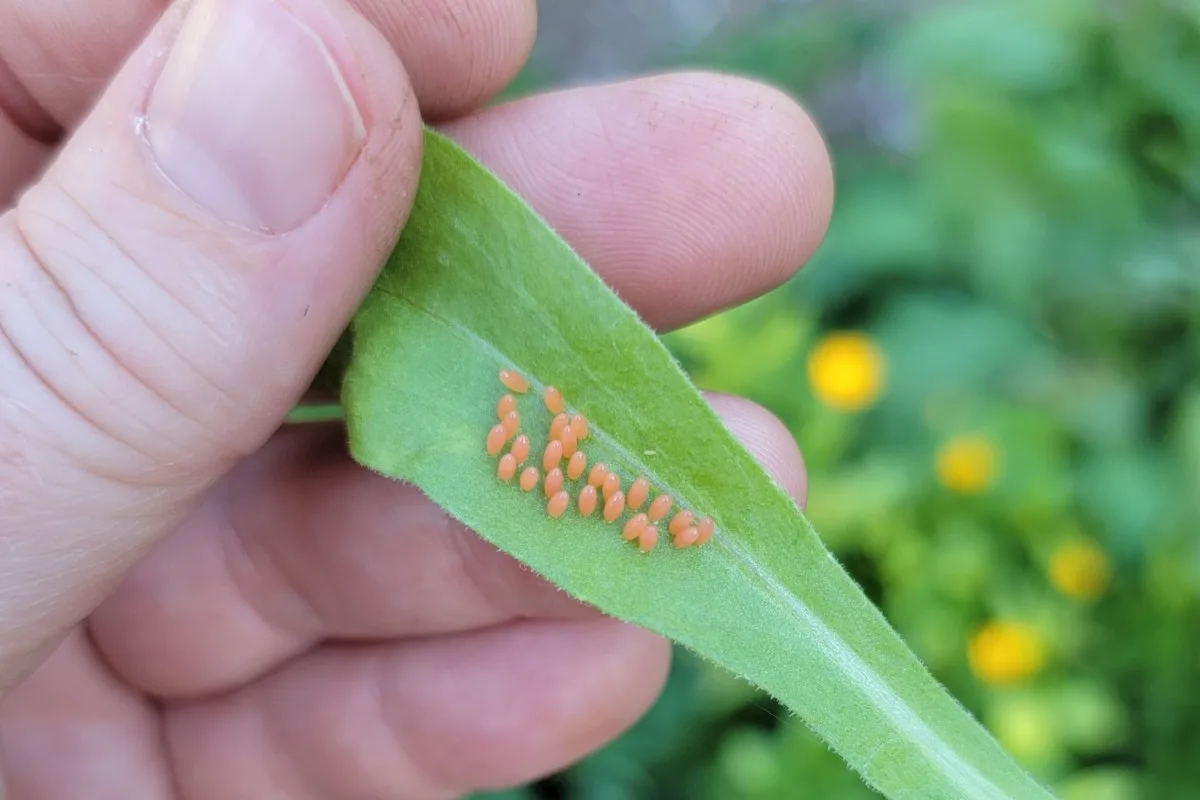
These oval eggs have the same hues as adult beetles and are generally easy to spot too. New hatchlings have a deep rusty red color, with black heads and several black spots on their small bodies.
As they grow older, they become pinker in color. The larvae stage of life is the most destructive as they feed on the foliage of the plant. Identifying and removing eggs from your potato plant may save your potatoes before any real issues take root.
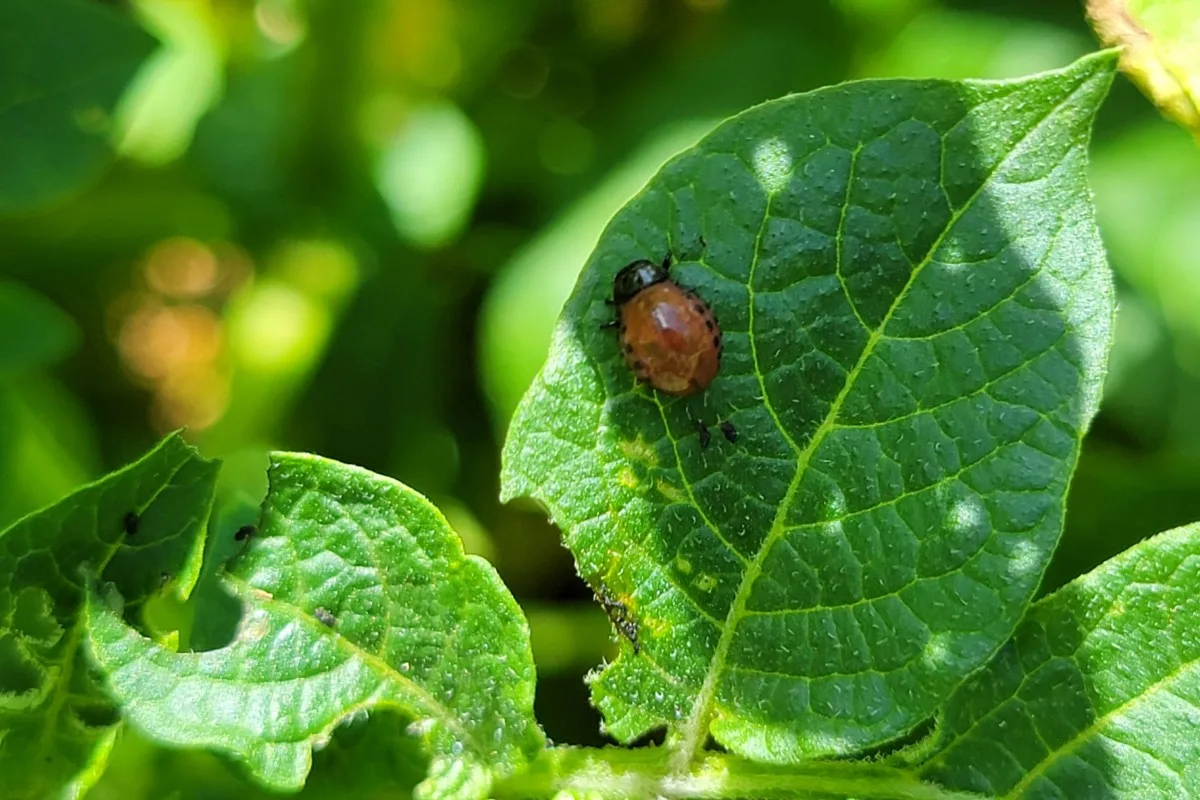
The main problem with Colorado potato beetles is overwintering. The beetles burrow deep in the soil in winter and emerge in early spring, staying out of sight. Once females mate, they begin to lay eggs. Hundreds of eggs can be laid on a single plant and will hatch in just over a week if temperatures permit. Larvae develop swiftly in warm weather, often in as little as 10 days.
The Damage
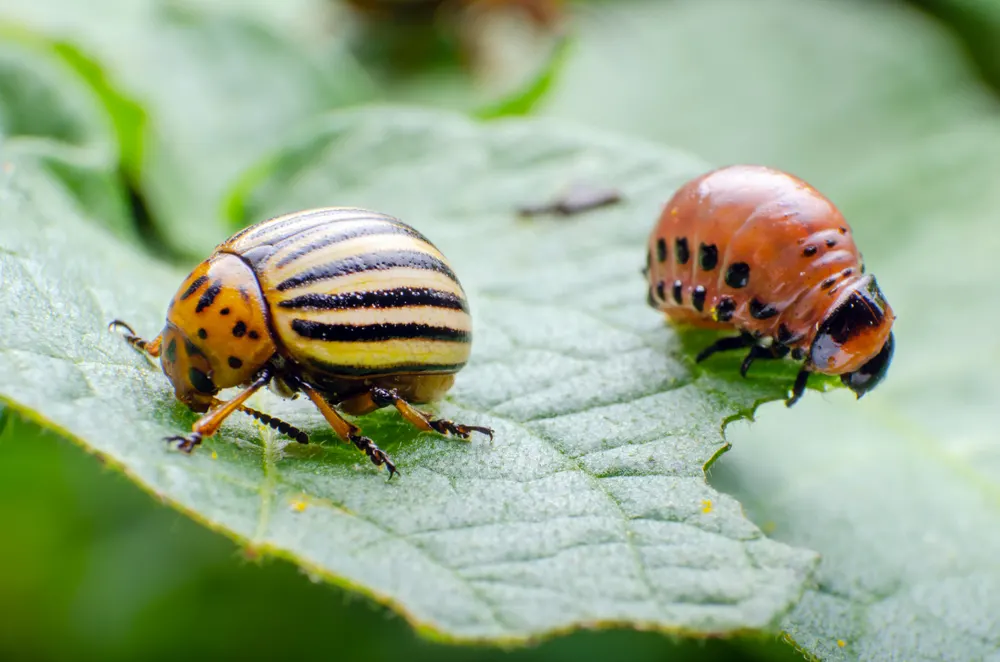
If you can’t identify the beetle, you will quickly notice the damage it causes. Larvae love to munch on new leaves and flowers. You will quickly spot holes of various sizes on leaves, indicating a potential beetle problem.
The larvae start on the outer edges of the leaves and work their way inward, quickly devouring the whole thing. If left, they will quickly defoliate an entire crop.
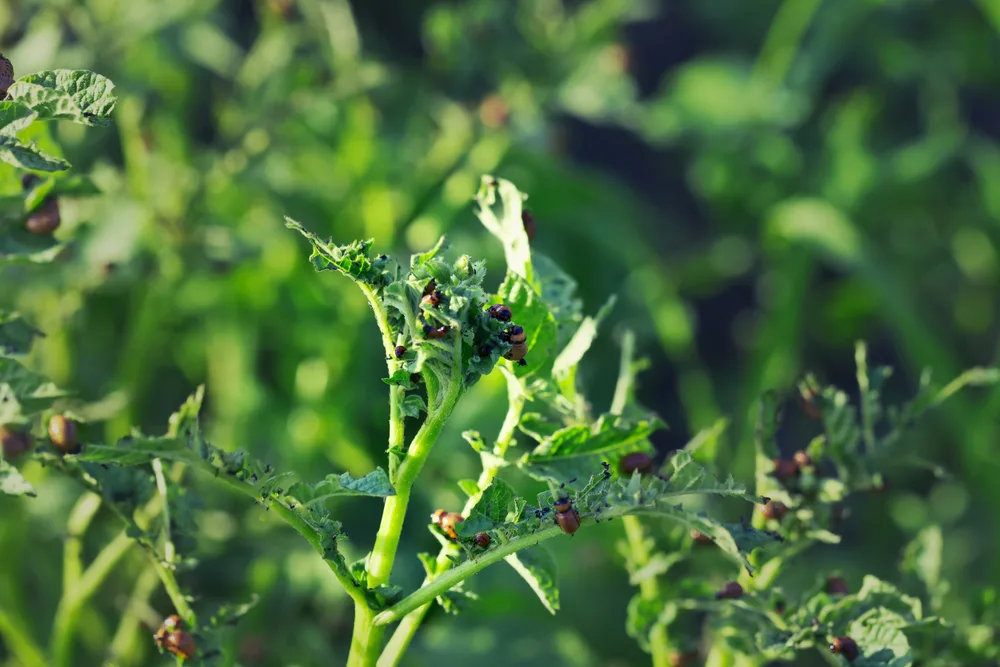
For those growing potatoes on a mass scale or in homesteads, this pest can strip entire potato fields of their foliage. The larvae are typically responsible for the majority of the damage, but adults will happily feed on foliage too.
Colorado potato beetle infestations sound scary – and they can be if left to run rampant in your garden. Don’t fret too much though – potatoes are generally hardy and can happily lose 30% of their foliage without affecting yields. This leaves you some time to get it under control, but sooner is always better.
6 Organic Ways To Deal With Colorado Potato Beetle
1. Neem Oil
Neem oil is a staple in many gardening sheds. This oil acts as a natural insecticide, helping with many pest infestations. Neem oil won’t damage your plants, but it may deter beneficial insects so it is important to spray carefully only on the affected plant.
When sprayed on your plants, it creates a coating on leaves and foliage, making them far less appetizing to the Colorado potato beetle and its larvae. If sprayed directly on the eggs, it can prevent them from hatching completely.
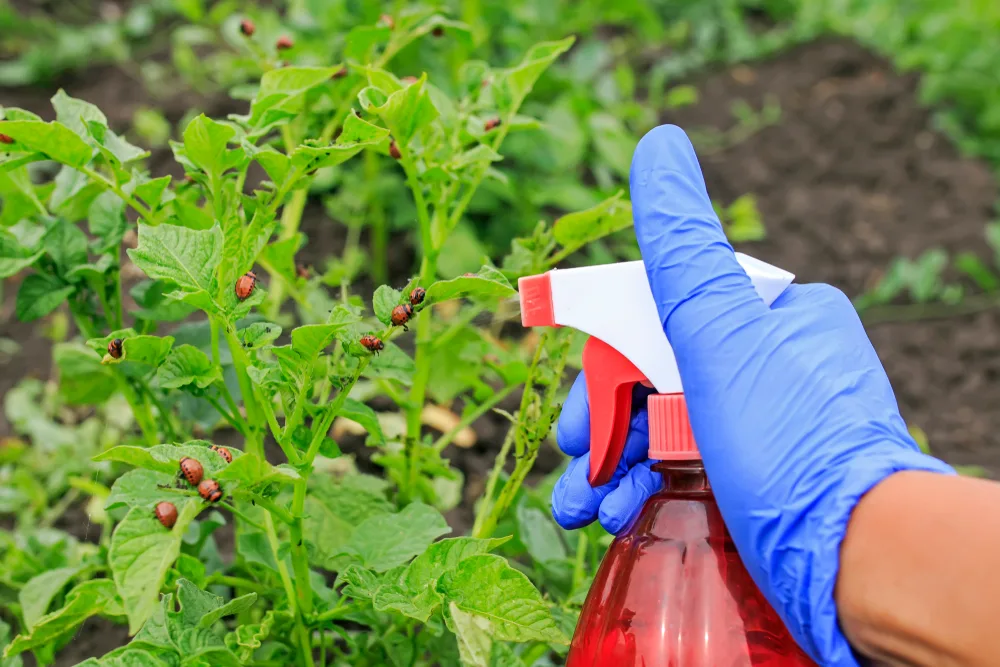
Create your own neem oil spray by mixing two cups of water and one tablespoon of neem oil in a water spray bottle. Spray as often as necessary all over the plant paying close attention to the underside of the leaves.
2. Handpicking
As with other pest control like aphids or caterpillars, you can always handpick the beetles, their larvae, and eggs off your plant. Kill them as soon as they are pulled by dropping them in a bucket of water with some dish soap. You will find them on the underside of leaves or hanging around the base of the plant.
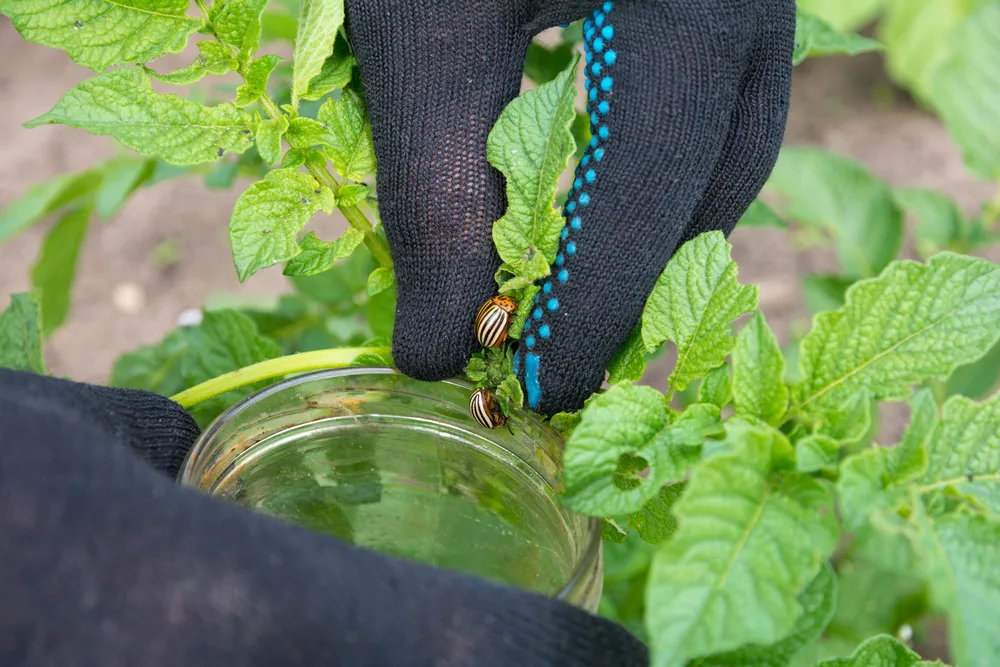
Adult Colorado potato beetles will bite if they feel threatened, so be careful. They’re not poisonous but their bite can be quite painful. Wear your trusty gardening gloves when removing them from your potatoes. Wash and sanitize them before you move on to your other plants.
3. Mulch
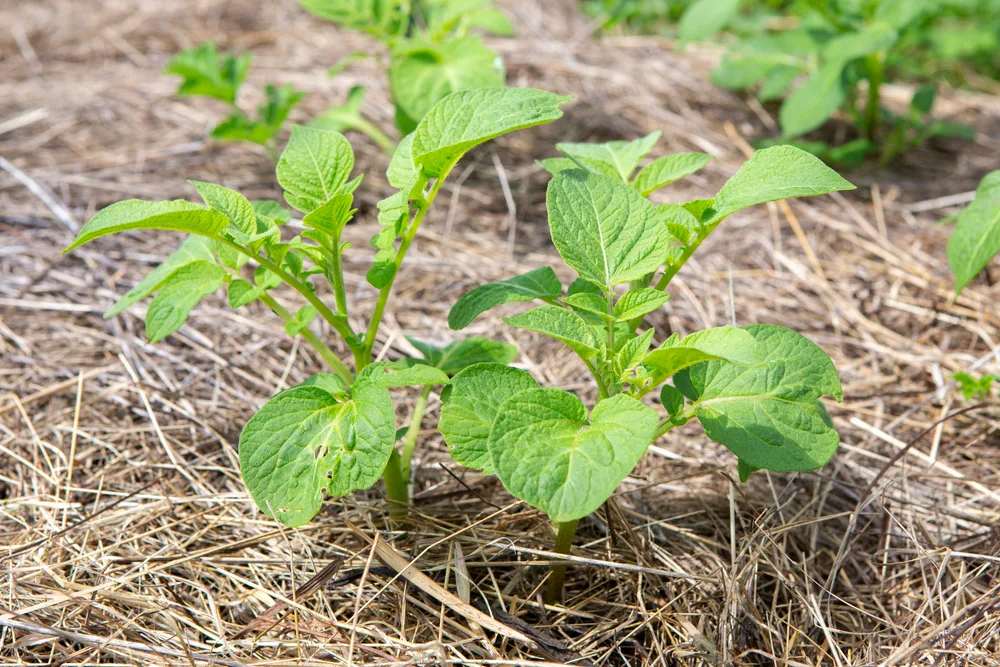
Mulching around the base of plants is another method used to prevent and control many pests and diseases. And, mulching is just as effective for Colorado potato beetle control.
The mulch will prevent this overwintering beetle from burrowing out of the soil. A straw mulch acts as a barrier, slowing these critters down so you can easily pick them off before they reach your plant. Mulching with straw will also protect your potato tuber from the sun and retain moisture in the soil – a must to ensure healthy plants and high yields.
4. Introduce Beneficial Pests And Companion Plants
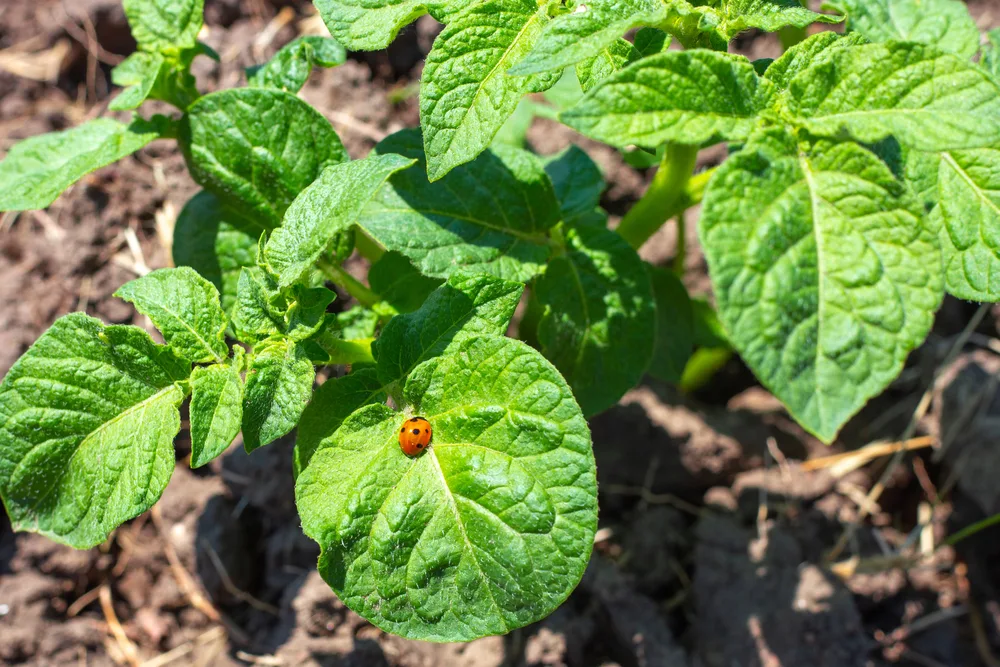
There are several good insects out there that control Colorado potato beetles by feeding or laying eggs inside them.
Ladybugs, parasitic wasps, and organic nematodes are great examples of some of these bugs. Beneficial insects will feed on eggs and larvae on your leaves. Organic nematodes added into the soil will attack overwintering beetles, preventing them from ever taking hold.
When it comes to the plants near your potatoes, companion planting is something all home gardeners should consider, especially when dealing with Colorado potato beetle infestations. These plants will either attract beneficial insects or deter the beetle completely.
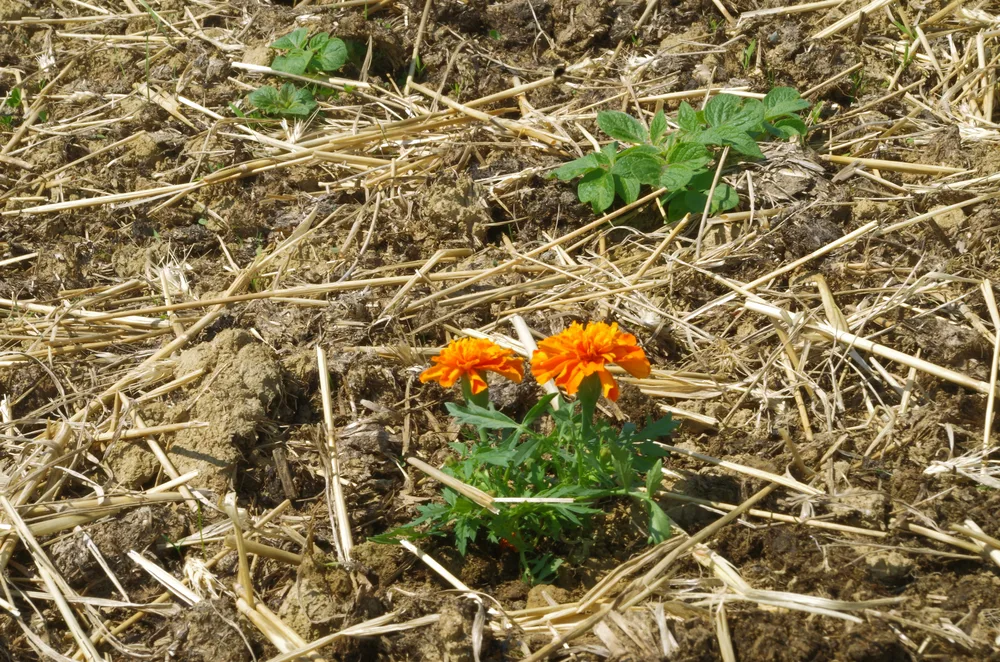
Marigolds and other bright flowers will attract good bugs to your garden. Sage, on the other hand, is a great companion plant that will deter the pest. Sage tends to grow and spread easily, so keep it contained to allow it deter pests without taking over your whole garden.
Here’s a whole list of beneficial companion plants to grow alongside your potatoes.
5. Row Covers
Row covers are ideal in pest control. They will protect all your plants – not just the potatoes – from pests and diseases, including the potato beetle. They also protect your plants from harsh heat and even frost.
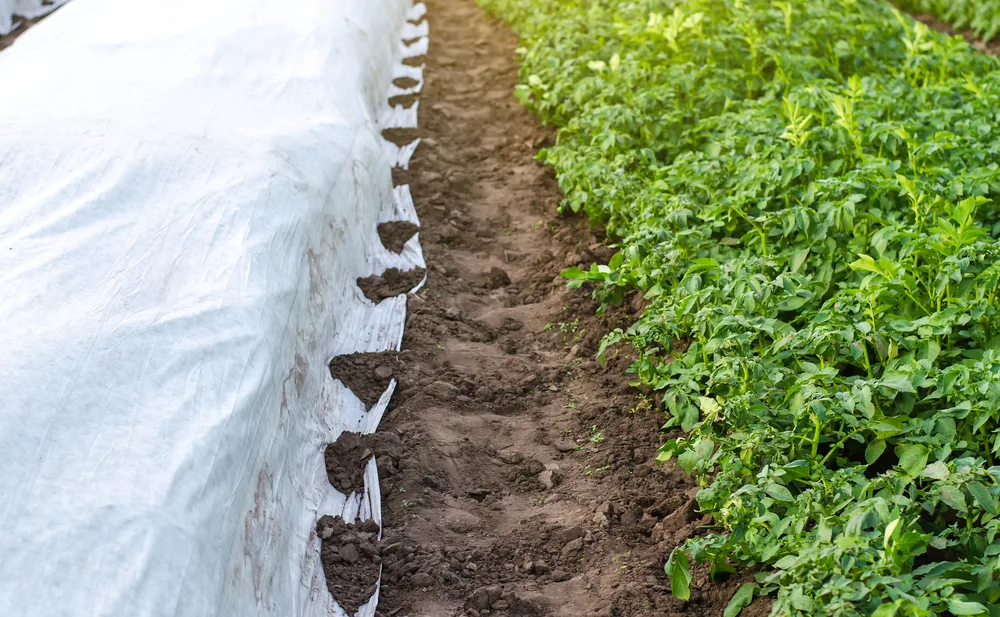
You can purchase row covers or build your own using shade cloth and PVC piping. The amount of material required depends on how tall the plant you are protecting grows. Potato plants can grow to 40 inches in height, so keep this in mind when building your row covers.
6. Crop Rotation
Crop rotation is a commonly recommended preventative measure for all pest control. Originating from farming pest-control practices, it improves the structure of your soil and prevents the concentration of pests in one area.
Every season, move your veggies to a different spot in the garden or swap crops in different places.
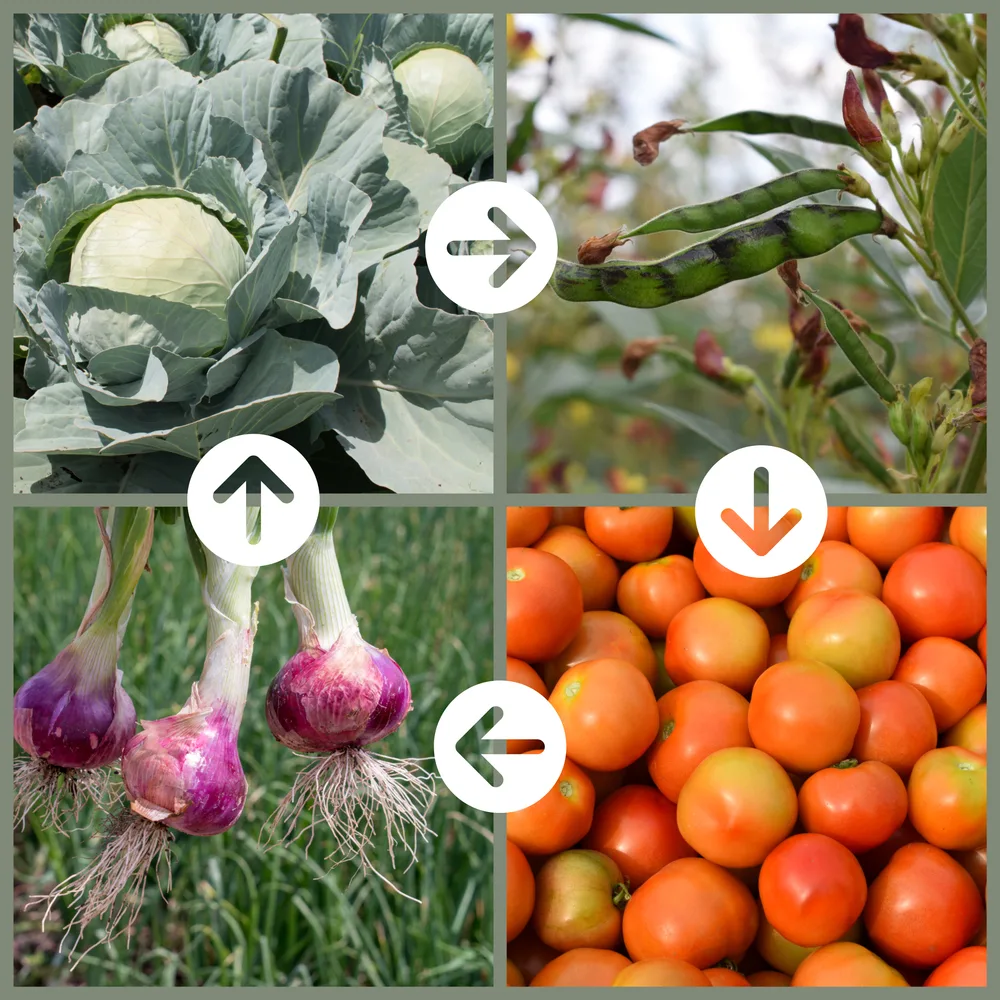
This will only be useful when moving plants of different families that aren’t susceptible to the same pests. If planting in raised beds, you can replace the soil, but this will be a costly exercise.
However, it is important to note that crop rotation may not be possible in smaller home gardens. In this case, the other control methods are your best line of defense.
The Colorado potato beetle may be the most destructive potato pest – resistant to many insecticides and ready to bite at a moment’s notice – but luckily, they can be easily dealt with using natural, organic approaches. Barriers, crop rotation, handpicking, and even natural sprays will rid your potatoes of this nasty bug.

Get the famous Rural Sprout newsletter delivered to your inbox.
Including Sunday musings from our editor, Tracey, as well as “What’s Up Wednesday” our roundup of what’s in season and new article updates and alerts.

